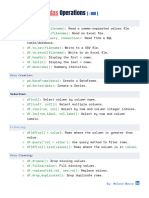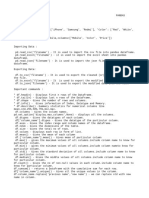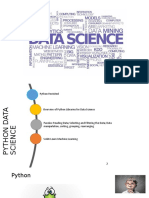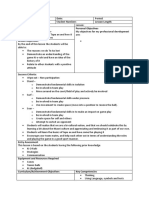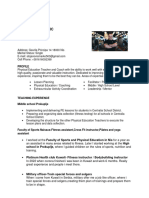0% found this document useful (0 votes)
35 views5 pagesBasics of Pandas
The document provides a comprehensive overview of using the pandas library in Python for data manipulation, including reading CSV files, filtering rows, selecting columns, and handling date types. It also covers various functions such as df.head(), df.tail(), and df.describe() to analyze dataframes. Additionally, it explains how to manage data types and handle missing values in datasets.
Uploaded by
iamsrijan47Copyright
© © All Rights Reserved
We take content rights seriously. If you suspect this is your content, claim it here.
Available Formats
Download as TXT, PDF, TXT or read online on Scribd
0% found this document useful (0 votes)
35 views5 pagesBasics of Pandas
The document provides a comprehensive overview of using the pandas library in Python for data manipulation, including reading CSV files, filtering rows, selecting columns, and handling date types. It also covers various functions such as df.head(), df.tail(), and df.describe() to analyze dataframes. Additionally, it explains how to manage data types and handle missing values in datasets.
Uploaded by
iamsrijan47Copyright
© © All Rights Reserved
We take content rights seriously. If you suspect this is your content, claim it here.
Available Formats
Download as TXT, PDF, TXT or read online on Scribd
/ 5








